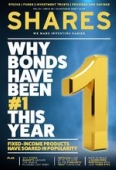Archived article
Please note that tax, investment, pension and ISA rules can change and the information and any views contained in this article may now be inaccurate.
What is the repo market and why is it behaving oddly?

Real film buffs will remember Repo Man, a 1984 science fiction film directed by the UK’s Alex Cox but it is the repo rate that investors need to be watching closely right now.
The repo rate is the level at which banks lend to each other overnight, or central banks lend to the banks.
It provides banks with immediate liquidity if they happen to need it and enables the lender to make a financial return pretty much without risk, given the extremely short time horizon involved and the collateral that backs them.
It is usually a quiet, uneventful market that forms an important, if unsung, part of the financial markets’ plumbing and tends to run smoothly. And that is why recent events in the repo market require scrutiny.
In fairness, if you had blinked you would have missed it. The repo rate has since come back down. But late September’s surge was not the first spike in this overnight lending rate. There have been four of five of them since late 2017, when the US Federal Reserve launched quantitative tightening (QT) and began to shrink its balance sheet.
SHARP SPIKE
Several theories have been put forward as to why the repo rate suddenly spiked and the banks found themselves a little short of ready cash. The most-widely fingered culprits have been corporation tax payments and the sale of lots of new Treasury bonds by the US government, whose budget deficit has continued to surge thanks to the Trump tax cuts.
Yet both of these would have been scheduled events, so it was odd that they caused such a scramble for cash.
An article on Reuters even went so far as to name JP Morgan as the bank that needed the money because it had run down the amount of cash on deposit with the US Federal Reserve and acquired US Treasuries to try and eke out some extra returns on its capital.
That meant JP Morgan, usually a big provider of liquidity to the repo market, actually needed to access it and had to pay up for the privilege.
This is not to say JPMorgan is in any financial difficulty, as it continues to meet all regulatory capital and liquidity requirements with ease. But, assuming Reuters’ report is correct, it does suggest that JP Morgan and other banks did not have any excess liquidity to hand, because they had invested their cash and thus could not contribute to the overnight interbank market.
In other words, quantitative tightening was working as planned and the Fed was draining away liquidity in an attempt to retreat from the unorthodox, emergency policies launched in 2008 to tackle the financial crisis.
POLICY PIVOT
The Fed has already backtracked. It stopped QT in July and thanks to several direct interventions to provide liquidity to the repo market its balance sheet has started to gently swell again, adding further monetary stimulus to the pair of interest rate cuts already pushed through.
This has several implications:
– The financial markets and the US economy struggled without their fix of cheap Fed liquidity, in the shape of record low interest rates.
– The Fed is expanding its balance sheet with hardly anyone noticing. It may not take much to prod the central bank toward more rate cuts and an official return to quantitative easing (QE) if even minor policy tightening gums up the financial markets’ plumbing.
– This could be good for risk assets, if markets decide more cheap cash is coming their way. One of the favourite charts of US equity market bulls is the one that runs the benchmark S&P 500 index against the expansion of the Fed’s balance sheet during the QE era. Oddly enough this chart almost disappeared from view when QE was halted and then QT began.
It could be good for gold but bad for risk assets if markets decide any return to unorthodox policy is the result of the very same policies’ prior failure to deliver the desired returns (growth and inflation). Gold did well when investors felt central banks were losing control (2007-11) and less well when they took the view the authorities had matters in hand (2012-18).
BAKE TO THE FUTURE
We must accept that the past is no guarantee for the future but little incidents such as the repo ructions need watching, especially if they become more frequent.
Add them to the WeWork fiasco; the high coupons demanded by investors before they funded Aston Martin (AML) and Metro Bank (MTRO); and bitcoin’s 25% plunge in the past month and you can construct a case that either liquidity is getting tighter or markets’ confidence is wobbling a little or both.
Important information:
These articles are provided by Shares magazine which is published by AJ Bell Media, a part of AJ Bell. Shares is not written by AJ Bell.
Shares is provided for your general information and use and is not a personal recommendation to invest. It is not intended to be relied upon by you in making or not making any investment decisions. The investments referred to in these articles will not be suitable for all investors. If in doubt please seek appropriate independent financial advice.
Investors acting on the information in these articles do so at their own risk and AJ Bell Media and its staff do not accept liability for losses suffered by investors as a result of their investment decisions.

 magazine
magazine











